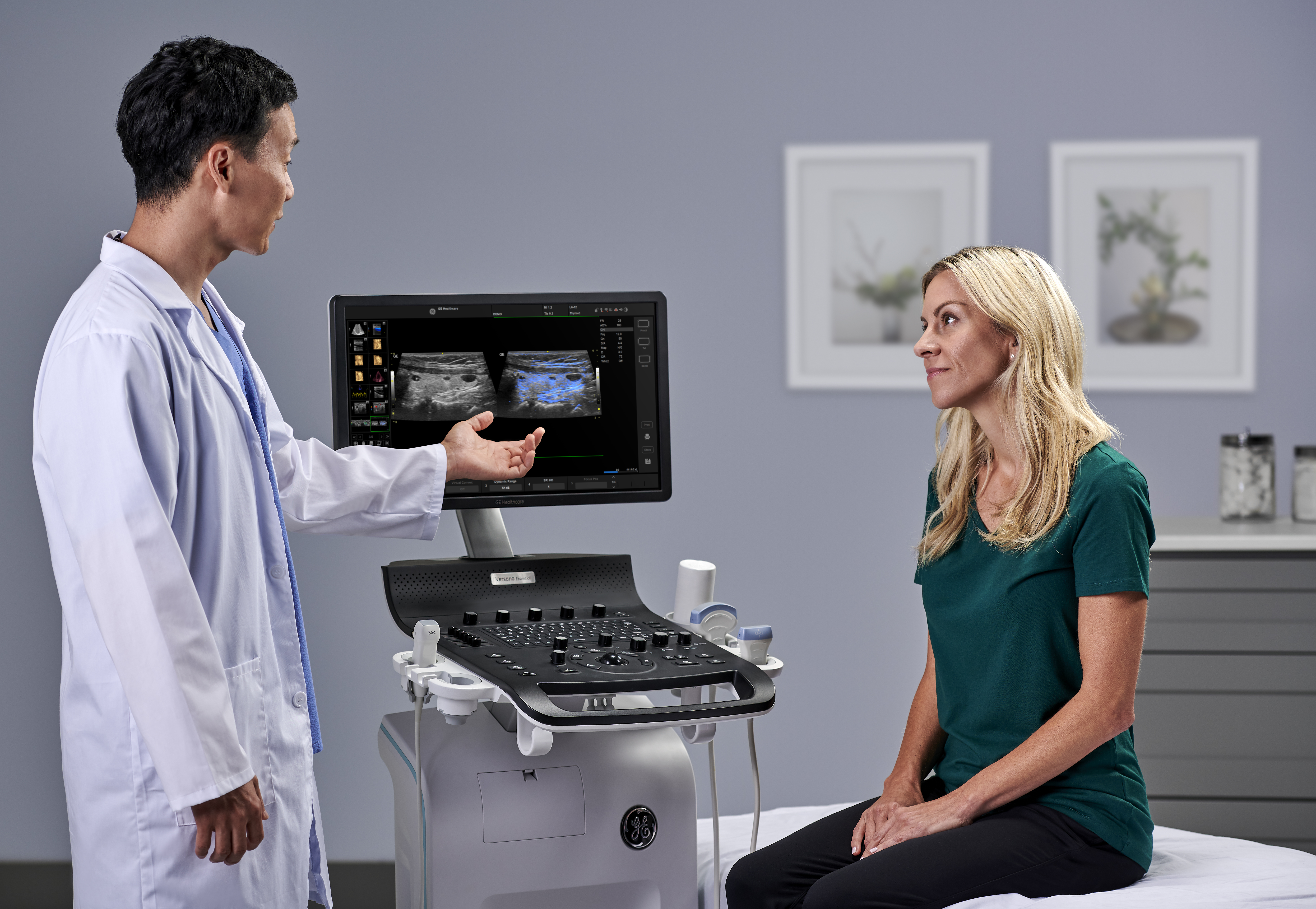The primary care landscape has grown steadily in recent years, and experts expect this expansion to continue at this pace over the next decade. Last year's total market value for primary care medicine was approximately $266 billion, a number forecasted to grow by more than 3.25% before the end of 2023.1
This continued spread of the primary care environment relies on its increased ability to achieve early detection of health issues through quality diagnostics and follow up with appropriate interventions. One of the fundamental pillars of this mission is the continued integration of quality primary care ultrasound systems.
As general practitioners (GPs) continue to look for ways to grow their practices and increase their revenue streams, ultrasound is—and should continue to be—a key component of these objectives.2
Read on for more details on how primary care ultrasound can help your practice streamline revenue and help achieve immediate, as well as long-term, growth.
Increasing scope of care
The right ultrasound system can quickly turn your general practice into a suite of different diagnostic specializations. Its integration of simple, intuitive tools, such as condition-specific probes, allows you to bring more scans in-house. These features can also increase patient satisfaction and expedite treatment: patients can move through the entire continuum of care right in your office, a simple pathway to increased retention.2
This ability to scan for and diagnose more conditions can almost immediately enable GPs to treat new patient populations.3 The diagnostic areas expanding most quickly into the primary care environment include cardiac, pulmonary, musculoskeletal, and soft tissue, while training demands have risen in the areas of bladder, urinary retention, abscess, tendon injection, and more.3 Each of these diagnostic applications represents the possibility for an entirely new revenue stream for your general practice.
From both a daily and long-term perspective, the inclusion of ultrasound into your practice can enhance the quality of care, help keep your staff informed when making treatment decisions, reduce costly diagnostic guesswork, and bring more components of treatment under your roof. This allows you to retain current patients while increasing your caseload as you expand.
Reducing clinical and administrative costs
The addition of in-house ultrasound capabilities can help increase your bottom line through everyday clinical and administrative cost-saving measures. It can help patients who need specialized care for conditions in the liver, abdomen, and other parts of the body. Additional data have linked ultrasound guidance in abdominal paracentesis procedures with fewer adverse events (AEs) and lower hospitalization costs overall.5
Ultrasound, specifically, can help reduce the healthcare costs of abdominal ultrasound by allowing clinicians to conduct brief and focused exams at a moment's notice. An established, growing body of research indicates that in-house ultrasound can increase cost-savings in emergency care settings.6
Choosing the right system to cut costs and boost revenue
While primary care ultrasound is an essential component of increasing revenue for your general practice, the system you choose is equally important. For starters, your system should be able to accommodate condition-specific probes to automatically scale up to offer more diagnostic capabilities.
The system you choose should also offer intuitive tech features and AI capabilities that provide image optimization and labeling assistance. These features maximize the accuracy of scanning while reducing the time and manual effort associated with labeling, storing, and other administrative tasks.
You should also be able to easily upgrade your system's software to scale capabilities when the time comes. Ease of use and adaptability to multiple experience levels can increase revenue by reducing the time, or employee-hours, associated with the learning curve. Finally, your ultrasound system should offer portability, so you can conduct more scans each day, for more patients, as the need arises.
Reliable, affordable, easy-to-use and versatile, Versana ultrasound systems have a variety of automation features, intuitive controls, and budget-friendly options to best meet patient needs.
Disclaimer
THE INFORMATION PROVIDED IN THIS DOCUMENT IS GENERAL REIMBURSEMENT INFORMATION ONLY; IT IS NOT LEGAL ADVICE, NOR IS IT ADVICE ABOUT HOW TO CODE, COMPLETE OR SUBMIT ANY PARTICULAR CLAIM FOR PAYMENT. IT IS ALWAYS THE PROVIDER’S RESPONSIBILITY TO DETERMINE AND SUBMIT APPROPRIATE CODES, CHARGES, MODIFIERS, AND BILLS FOR THE SERVICES THAT WERE RENDERED. THIS INFORMATION IS PROVIDED AS OF MARCH 1ST, 2022 ALL CODING AND REIMBURSEMENT INFORMATION IS SUBJECT TO CHANGE WITHOUT NOTICE. PAYERS OR THEIR LOCAL BRANCHES MAY HAVE DISTINCT CODING AND REIMBURSEMENT REQUIREMENTS AND POLICIES. BEFORE FILING ANY CLAIMS, PROVIDERS SHOULD VERIFY CURRENT REQUIREMENTS AND POLICIES WITH THE LOCAL PAYER. THIRD PARTY REIMBURSEMENT AMOUNTS AND COVERAGE POLICIES FOR SPECIFIC PROCEDURES WILL VARY INCLUDINGBY PAYER, TIME PERIOD AND LOCALITY, AS WELL AS BY TYPE OF PROVIDER ENTITY. THIS DOCUMENT IS NOT INTENDED TO INTERFERE WITH A HEALTH CARE PROFESSIONAL’S INDEPENDENT CLINICAL DECISIONMAKING. OTHER IMPORTANT CONSIDERATIONS SHOULD BE TAKEN INTO ACCOUNT WHEN MAKING DECISIONS, INCLUDING CLINICAL VALUE. THE HEALTH CARE PROVIDER HAS THE RESPONSIBILITY, WHEN BILLING TO GOVERNMENT AND OTHER PAYERS (INCLUDING PATIENTS), TO SUBMIT CLAIMS OR INVOICES FOR PAYMENT ONLY FOR PROCEDURES WHICH ARE APPROPRIATE AND MEDICALLY NECESSARY. YOU SHOULD CONSULT WITH YOUR REIMBURSEMENT MANAGER OR HEALTHCARE CONSULTANT, AS WELL AS EXPERIENCED LEGAL COUNSEL.

